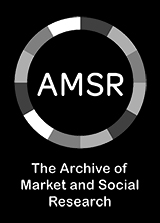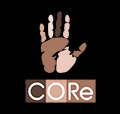MRS Silver Medal 2023
10 March 2023
The finalists for the best paper published by the International Journal of Market Research last year have been announced, recognising academic and practitioner authors with affiliations in the UK as well as Australia, New Zealand and the USA.
Carlos A. Diaz Ruiz’s (University of Auckland, New Zealand) The Insights Industry: Towards a performativity turn in market research explores how ‘market researchers’ have reinvented themselves as ‘insights professionals’ by offering solution services, creating architectures that integrate organic and designed data, making heroes in clients’ organisations and forging performative relationships based on strategic guidance. The paper conceptualises the changes in the research sector through the performativity lens.
A Question of Gender: Gender classification in international research by Trixie Cartwright (Ipsos, UK) and Clive Nancarrow (University of the West of England, UK) discuss ‘sex’, ‘gender’ and related categories and how research participants might identify themselves within them. The paper looks at classification methods, formats of questions, implications for international research in countries where diversity and associated inclusivity are not yet recognised and the consequences and implications of adopting questions that recognise diversity.
In A practical review of electroencephalography’s value to consumer research, authors Aaron N McInnes (University of Minnesota Twin Cities, USA; Curtin University, Australia), Billy Sung and Reyhane Hooshmand (both Curtin University, Australia) provide guidelines for using electroencephalography (EEG) in research. The paper offers recommendations for how EEG may effectively be employed in neuromarketing in the future, including processes relating to perception, attention, memory, emotion, and cognitive load, and demonstrates the unique value of considering the neural responses captured by EEG in understanding and predicting consumer behaviour.
Finally, Finding creative drivers of advertising effectiveness with modern data analysis by John Williams (University of Otago, New Zealand), Nicole Hartnett and Giang Trinh (both Ehrenberg-Bass Institute for Marketing Science, Australia) shows how applying many alternative but equally plausible analytical methods can identify creative variables associated with commercial success, providing evidence-based confidence that creative variables are artefacts of the data, and not artefacts of any particular analytical method and its associated assumptions. The findings reveal several alternative creative variables that are consistently associated with sales success across methods, which relate to the timing aspects of visual branding.
Fellows and Certified Members can read these papers online today via the IJMR website. Other Members can request copies by emailing membership@mrs.org.uk.
The winning paper will be announced at the MRS Excellence Awards lunch on 9 June.
Get the latest MRS news
Our newsletters cover the latest MRS events, policy updates and research news.










